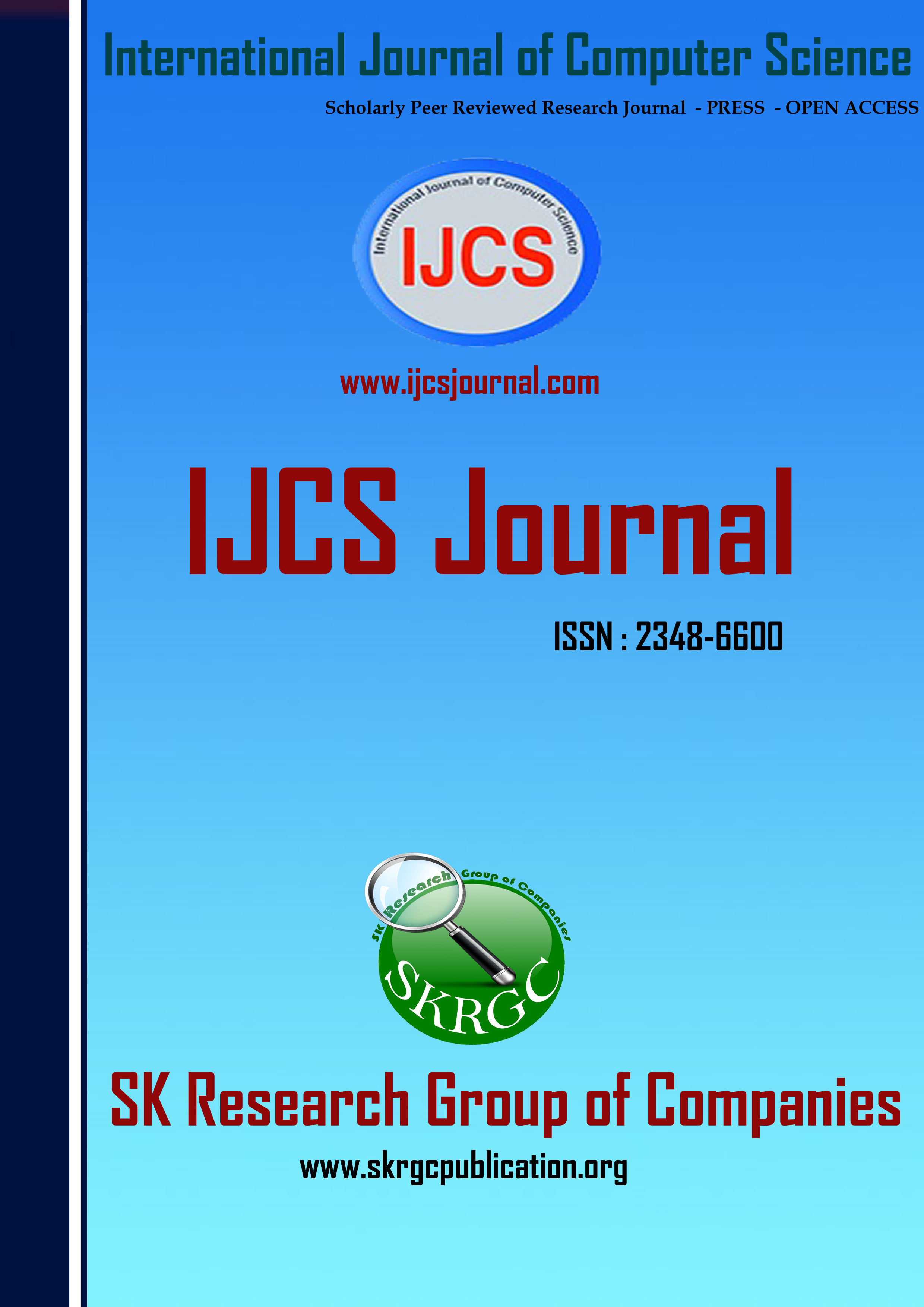SPOC: A Secure And Privacy Preserving Oppurtunistic Computing Framework Using PPSPC Technique
International Journal of Computer Science (IJCS) Published by SK Research Group of Companies (SKRGC).
Download this PDF format
Abstract
With the pervasiveness of smart phones and the advance of wireless body sensor networks (BSNs), mobile Healthcare (m-Healthcare), which extends the operation of Healthcare provider into a pervasive environment for better health monitoring, has attracted considerable interest recently. However, the flourish of m-Healthcare still faces many challenges including information security and privacy preservation. In this paper, we propose a secure and privacy-preserving opportunistic computing framework, called SPOC, for m-Healthcare emergency. With SPOC, smart phone resources including computing power and energy can be opportunistically gathered to process the computing-intensive personal health information (PHI) during m-Healthcare emergency with minimal privacy disclosure. In specific, to leverage the PHI privacy disclosure and the high reliability of PHI process and transmission in mHealthcare emergency, we introduce an efficient user-centric privacy access control in SPOC framework, which is based on an attribute-based access control and a new privacy-preserving scalar product computation (PPSPC) technique, and allows a medical user to decide who can participate in the opportunistic computing to assist in processing his overwhelming PHI data. Detailed security analysis shows that the proposed SPOC framework can efficiently achieve user-centric privacy access control in m- Healthcare emergency. In addition, performance evaluations via extensive simulations demonstrate the SPOC’s effectiveness in term of providing high-reliable-PHI process and transmission while minimizing the privacy disclosure during m-Healthcare emergency.
References
[1] A. Toninelli, R. Montanari, and A. Corradi, “Enabling Secure Service Discovery in Mobile Healthcare Enterprise Networks,” IEEE Wireless Comm., vol. 16, no. 3, pp. 24-32, June 2009.
[2] R. Lu, X. Lin, X. Liang, and X. Shen, “Secure Handshake with Symptoms-Matching: The Essential to the Success of Mhealthcare Social Network,” Proc. Fifth Int’l Conf. Body Area (BodyNets ’10), 2010.
[3] Y. Ren, R.W.N. Pazzi, and A. Boukerche, “Monitoring Patients via a Secure and Mobile Healthcare System,” IEEE Wireless Comm., vol. 17, no. 1, pp. 59-65, Feb. 2010.
[4] R. Lu, X. Lin, X. Liang, and X. Shen, “A Secure Handshake Scheme with Symptoms-Matching for mHealthcare Social Network,” Mobile Networks and Applications—special issue on wireless and personal comm., vol. 16, no. 6, pp. 683-694, 2011.
[5] M. Li, S. Yu, Y. Zheng, K. Ren, and W. Lou, “Scalable and Secure Sharing of Personal Health Records in Cloud Computing Using Attribute-Based Encryption,” IEEE Trans. Parallel and Distributed System, to be published.
[6] M.R. Yuce, S.W.P. Ng, N.L. Myo, J.Y. Khan, and W. Liu, “Wireless Body Sensor Network Using Medical Implant Band,” J. Medical Systems, vol. 31, no. 6, pp. 467-474, 2007.
[7] M. Avvenuti, P. Corsini, P. Masci, and A. Vecchio, “Opportunistic Computing for Wireless Sensor Networks,” Proc. IEEE Int’l Conf. Mobile Adhoc and Sensor Systems (MASS ’07), pp. 1-6, 2007.
[8] A. Passarella, M. Conti, E. Borgia, and M. Kumar, “Performance Evaluation of Service Execution in Opportunistic Computing,” Proc. 13th ACM Int’l Conf. Modeling, Analysis, and Simulation of Wireless and Mobile Systems (MSWIM ’10), pp. 291-298, 2010.
[9] M. Conti, S. Giordano, M. May, and A. Passarella, “From Opportunistic Networks to Opportunistic Computing,” IEEE Comm. Magazine, vol. 48, no. 9, pp. 126-139, Sept. 2010.
[10] M. Conti and M. Kumar, “Opportunities in Opportunistic Computing,” IEEE Computer, vol. 43, no. 1, pp. 42-50, Jan. 2010.
Keywords
Mobile-healthcare emergency, opportunistic computing, user-centric privacy access control, PPSPC

